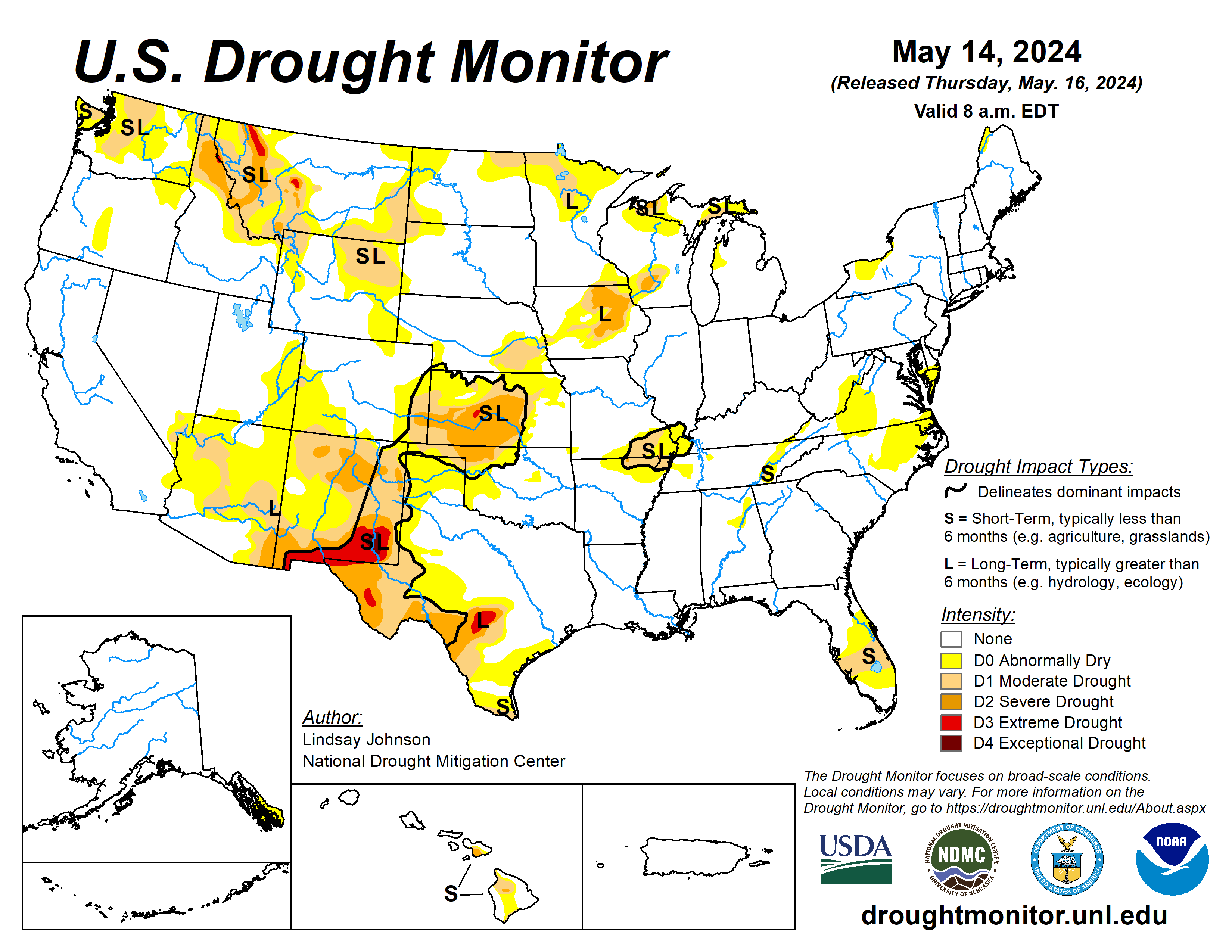Summer Weather Outlook for Corn Belt

As the tropical Pacific Ocean temperatures continue to cool and expand, El Niño’s reign is waning. Weather patterns are transitioning to neutral conditions through June, with La Niña impacts predicted to arrive by mid-summer.
The biggest change headed into summer is that May rainfall has reduced drought area across the Corn Belt and slowed crop planting.
“This neutral transition period continues to keep rainfall systems moving through the Corn Belt at a relatively frequent pace,” says John Baranick, DTN Meteorologist. “It is somewhat chaotic and unpredictable, which is a good thing compared to what lies ahead with hotter and drier La Niña conditions likely coming in July.”
Current weather models lack agreement on the timing of La Niña’s arrival, but there is agreement on a coming hot summer. Baranick says history shows to expect a couple degrees warmer than normal temperatures and longer and more frequent stretches of hot weather.
The main concern with La Niña is semi-permanent upper-level ridge development that may bring heat and dryness during critical July pollination time. “La Niña history suggests dryness toward the middle of the U.S., and models suggest a drier western half of the Corn Belt similar to the patterns in 2020-2022 and 2010,” Baranick says. “But such analog years only help long-range forecasters get a general idea of what to expect over larger areas.”
Another characteristic of La Niña is an increase in tropical storms in the Atlantic. Current ocean temperatures in late April are reminiscent of what we’d normally see in June and July. “It won’t take much of a front or disturbance moving off Africa to develop hurricanes coming through the Gulf of Mexico or up the East Coast to dump a lot of rain that could impact the eastern Corn Belt,” Baranick says.
Not every La Niña produces similar weather patterns, and ridges are only hot and dry where they set up. For example, a ridge centered over the Rockies and Plains brings cool and wet weather to the East. An eastern ridge provides rain to the Plains and upper Midwest. And a ridge that camps in the Gulf Coast and southern states brings cool and wet relief to the Corn Belt.
Yet even when a central ridge sets up dryer and hotter weather over the Corn Belt, that hotter air has more access to the moist Gulf of Mexico air as it comes up. So, even if precipitation events are fewer, they might be more severe and beneficial.
“The best scenario is for the ridges to set up in different locations, but forecasting that beyond one month out is difficult,” Baranick adds. “High-pressure systems over China can throw the jet stream for a wild loop. Storms that develop over Iceland can completely change what happens in North America. And thunderstorm groups formed in the Indian Ocean and western Pacific Ocean all play a role in changing the upper-level pattern where these ridges happen in North America.”
Even with the potential risk when a ridge sets up to impact the Corn Belt, DTN anticipates a bump in precipitation during July and August that favors the central and eastern U.S. Despite the predicted heat, if rains come at the right time with good intensity, the damage to yield potential is reduced.
“Thanks to improved crop genetics, we’ve seen yield records broken even in drought areas when crops receive timely rains,” Baranick says. “We set a corn yield record last year amidst some wild dry conditions, and while the August dryness sapped soybeans, we were close to a soybean yield record, too.”
As of this writing (mid-May), frequent rainfall activity has improved topsoil and some subsoil moisture in many areas across the Corn Belt. Severe drought is gone from the Midwest, with only some moderate drought or abnormally dry pockets remaining.
“Through mid-May, only southwestern Kansas and northwest Oklahoma and the panhandle have missed out on the active rainfall pattern we’ve seen throughout the spring,” Baranick says.

Few long-term water deficits remain (marked with an ‘L’ on the U.S. Drought Monitor Map). Significant improvements have occurred in actual soil moisture, but it will take time for the long-term drought areas to recover after the last few years of extreme drought.
“These long-term deficits below ground and in the aquifers are not as much of an agricultural concern as they are an ecological or geological issue that will take years of good weather to replenish,” Baranick says. “Rains have curtailed long-term drought, and areas of moderate drought/abnormally dryness in southeast Nebraska, central to northeast Iowa and southwest Wisconsin could diminish further with late-May rainfall.”
“While we’re still concerned about the coming hot and dry western half of the Corn Belt, good spring rainfall has pushed these dryness concerns later into the summer, which could be beneficial,” Baranick says.
Content provided by DTN/The Progressive Farmer
Find expert insights on agronomics, crop protection, farm operations and more.